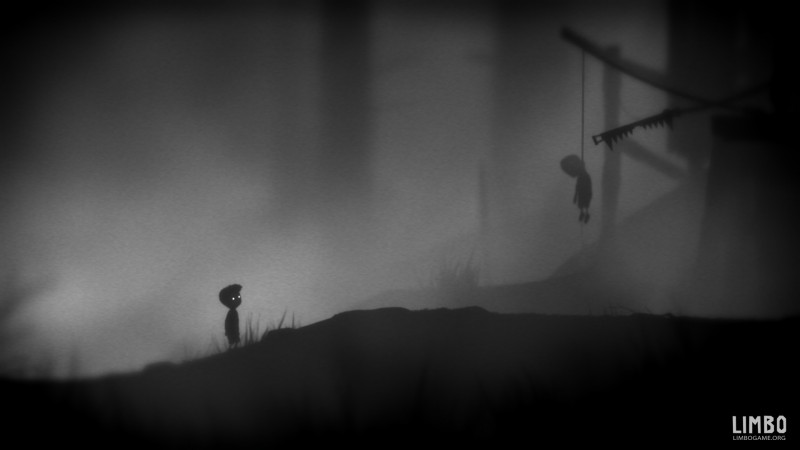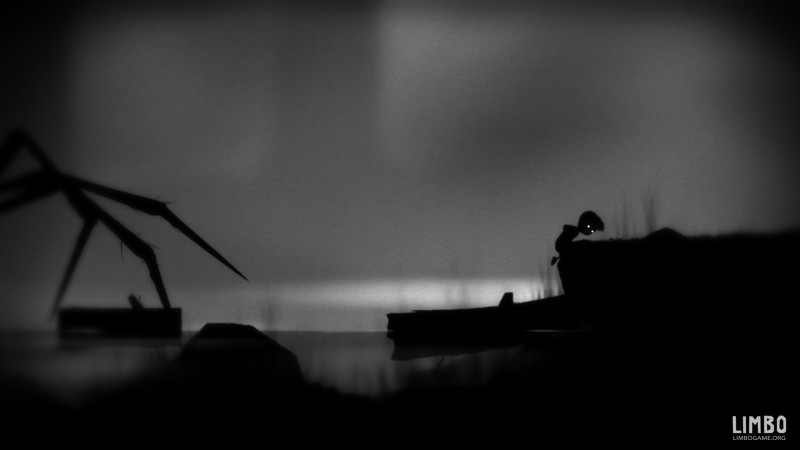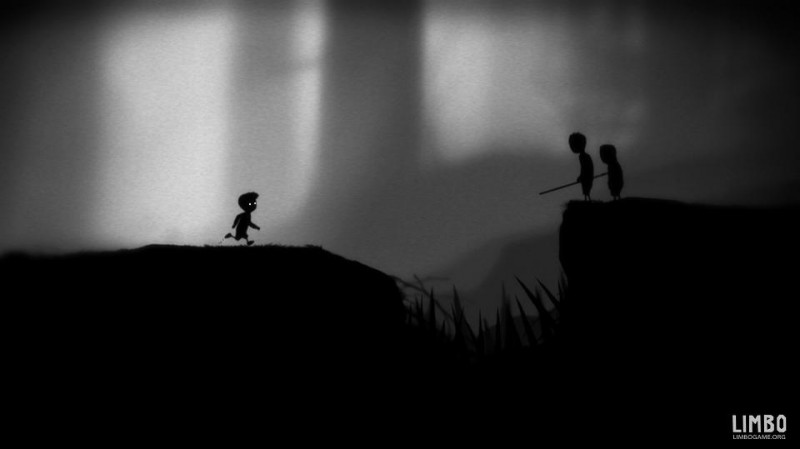Limbo Review (XBLA)
Limbo was developed and published by Playdead for XBLA on July 21, 2010. Retails for 1200 Microsoft Points.
As a child growing up, I was always scared of the dark. I had reoccurring nightmares of being unable to move, and being dragged by an invisible force into the darkest room in the house. But it wasn’t the dark that was scary – it was the thought of what unseen horror was hiding in the dark.
Unexpectedly, Limbo brought me back to these childhood memories during my time with the game, and created a sense of dread, despair and horror that I haven’t felt in a videogame for quite a long time. What terrible doom waits for me in the shadows? Where am I, and how will I get out of here? All these questions and more ran through my mind as I empathized with the poor boy you play as.
The young boy is in part what makes the game so moving and horrific. Waking up in a strange forest with no indication of what to do, where you are, or where to go, you guide him through a hellish world where a grisly death always waits a step ahead. And while seeing a boy die violently is chilling to the bone, the deaths you witness aren’t always his. Death is a major theme throughout the game, constantly reminding you that life is fragile.
Here’s what we liked:
Amazing atmosphere – “Less is more” definitely applies to Limbo. There is no story, voices or even a soundtrack. Hell, the entire game is in black and white. Yet, it manages to be so entrancing without any of these things. Ambient noises really add to Limbo’s mood, and can be incredibly striking at times. The audio also plays a major role in puzzle solving, as listening to key audio clues is crucial to solving some of them. Small graphical touches such as flies buzzing over dead corpses, thick hairs growing from an insect’s leg and the way the boy’s white eyes close when he dies add to Limbo’s creepiness quite a bit.
No hand-holding or explanations – Again, “less is more” applies here too. There are no tutorials or on-screen help indicators. There is no voice explaining the story or anything about the game at all, and Limbo is a much better experience because of this. It becomes very clear early on that Limbo’s world is brutal, deadly and unforgiving, and there is nothing or no one that will help you. It’s all up to you to survive, which is a welcome change when compared to most modern games and their 15-minute tutorials, cluttered menus, intrusive HUDs and the like. Everything is just simple, clean and minimalist.
Clever puzzle design – Limbo’s puzzles are very well designed and ramp-up steadily as the game continues. Many are based on physics, which requires the player to really think and get creative later on in the game. A couple had me so stumped that I thought I might have to resort to a FAQ, but approaching the puzzles in different and more resourceful ways helped me find an answer where I thought there was none. Being both attentive and experimental is important to solving them, and becomes all the more rewarding when the light bulb in your head finally clicks on.
Here’s what we didn’t like:
Uneven pacing – Throughout the first half of the game, you’ll encounter a number of other living creatures, some of which appear to human. While none are friendly, they really help the player make an emotional connection to the game. There are enough puzzles and these memorable encounters with life early on to keep things varied. However, during Limbo’s second half (which is heavily focused on puzzle solving) there is a complete absence of life that tends to hurt this connection. It would have been nice to have a couple more encounters with something else living, but in reality it doesn’t detract from the amazing experience.
Limbo is not an uplifting game. It’s dark, disturbing and filled with a lot of death. But it’s unlike anything out there. Ironic that a videogame without color, dialogue, story or music can be one of the best in recent memory.
I imagine that Limbo will be talked about and discussed for years to come. It seems destined to be part of the “Games are a form of art” debate, and features an unsettling ending that is open for deliberation. What is certain, however, is that Limbo is an original, brilliant and deserving game to be in any gamer’s collection. Do yourself a favor and play this game, you won’t regret it.
Score: BUY



